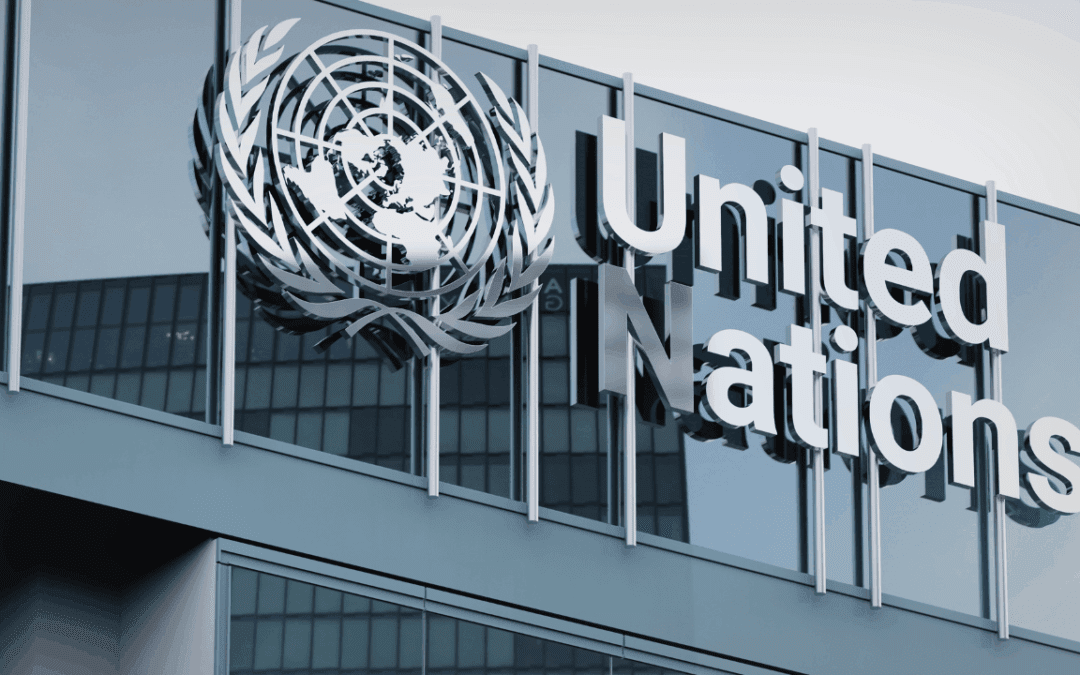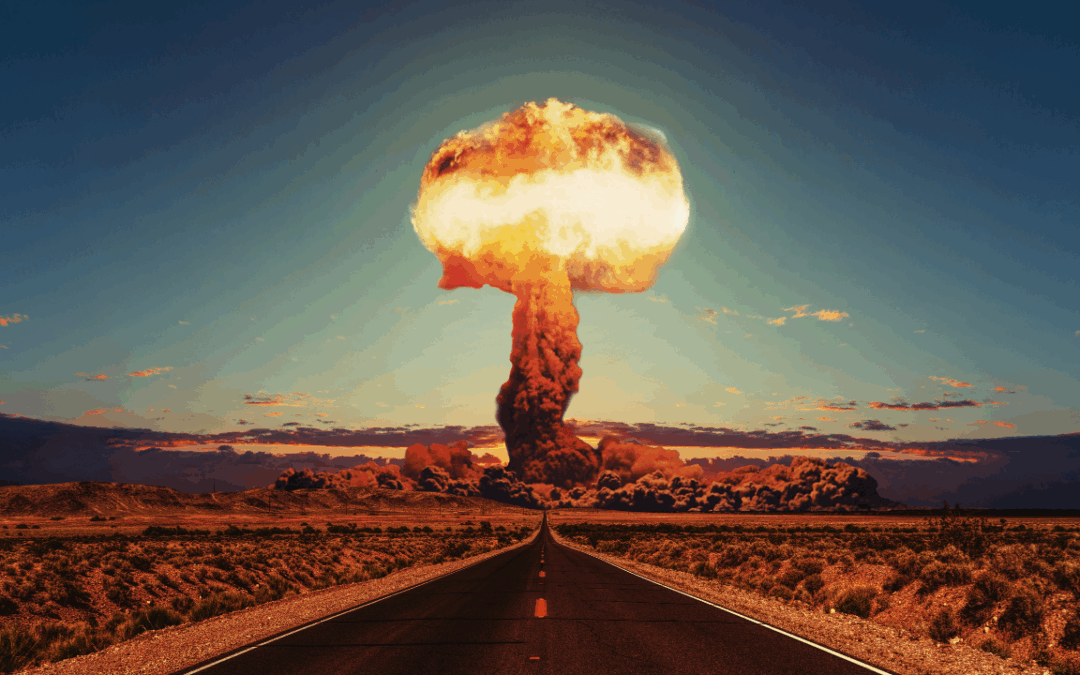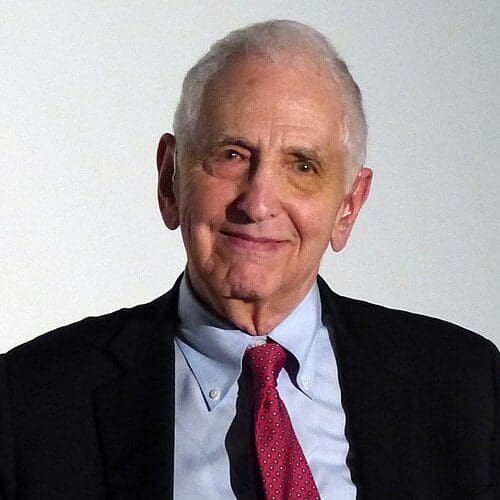
by Lawrence Wittner | Nov 25, 2025 | UN Reform
Although the world is experiencing severe global crises, there are new efforts underway to create a more effective means of coping with them.
The crises are clear enough. They include vast slaughter in horrific wars, worldwide climate catastrophe, massive population displacement, and deepening poverty.
Moreover, these disastrous situations are likely to worsen in coming years. Modern wars are fought with increasingly devastating weapons, and preparations for nuclear war have escalated to the level of global annihilation. Similarly, time is running out for saving the planet from an environmental cataclysm, which will surely lead to heightened displacement and poverty.
There is, of course, a global organization formally tasked with tackling global problems: the United Nations. And the officials of that international entity do frequently make admirable recommendations for how these problems can be solved. Indeed, there is a consensus among most of the UN’s 193 nations about what should be done to preserve a decent future for humanity: end the wars; foster nuclear disarmament; sharply reduce the burning of fossil fuels; assist refugees; promote social progress; and feed the hungry.
The problem is that the United Nations, despite its virtues, remains at the mercy of the major military and economic powers that created it. And they are not only frequently at odds with one another, but are usually determined to see to it that their national interests―as they define them―prevail over the interests of the world community.
When it comes to international security, each of the five permanent members of the UN Security Council (Britain, China, France, Russia, and the United States) can veto UN action―and all too often do so.
When it comes to UN efforts to address climate change, the situation is not much better, for the great powers continue to burn and (as in the case of Russia and the United States) extract and profit from selling vast quantities of fossil fuel. Consequently, they weaken or sabotage UN-sponsored climate agreements.
Another way the great powers hamstring the United Nations is by abandoning its operations and reducing its meager funding. The U.S. government, under Donald Trump, is particularly flagrant in this regard, pulling the United States out of key UN agencies and slashing voluntary contributions and mandated dues payments to the world organization. As of this October, the United States has compiled a debt of $1.5 billion in mandated funding to the United Nations, followed by China ($192 million) and Russia ($72 million).
Frustrated by the UN’s inability to adequately handle global challenges, a network of civil society organizations, scholars, policy experts, and diplomats took action on September 22, 2025 to launch Article 109, an international coalition to mobilize public opinion, social movements, and national governments to activate a UN Charter Review conference.
When the UN Charter was signed in 1945, the document’s drafters provided for its evolution through Article 109, which states that a Charter Review Conference can be launched by a two-thirds vote of the General Assembly and any nine (formerly seven) members of the Security Council. As today’s Article 109 Coalition observes, this conference could update and empower the United Nations by enacting structural changes (e.g., reforming the Security Council, creating a UN Parliamentary Assembly, and establishing a Climate Council), as well as by making normative upgrades (e.g., supporting gender equality).
More than 40 civil society organizations are now part of the Article 109 Coalition. They include global campaigning organizations like Oxfam International, Democracy Without Borders, the Global Governance Forum, and the World Federalist Movement/Institute for Global Policy; regional organizations in Africa and Latin America; think tanks like the Quincy Institute for Responsible Statecraft; and national organizations like EYC (which empowers youth in Cambodia) and Citizens for Global Solutions (which organizes in the United States). The Club de Madrid, a recent endorser of Charter review, is a forum that brings together more than 100 former Heads of State.
Indeed, recent heads of state and current government officials participated prominently in the September 22 launch event. Mary Robinson, former Irish President and UN High Commissioner for Human Rights, delivered the keynote address. She was followed by Alexander De Croo (former Belgian Prime Minister), Helen Clark (former New Zealand Prime Minister and UN Development Program Administrator), and Ambassador Muhammadou Kah (The Gambia’s Permanent Representative to the UN in Geneva).
UN Charter review has several potential drawbacks. For example, it could end up producing an amendment that reduces the purview of the international organization. Furthermore, the process will be lengthy. The Article 109 Coalition envisions a UN vote in 2027 to authorize a Charter review conference to convene in 2030. Finally, any amendment to the Charter must be ratified not only by two thirds of the UN membership, but by all permanent members of the Security Council―the five great powers that have helped enfeeble the world organization.
But these obstacles could be overcome. If there is a major campaign to strengthen the UN among members of the public, organizations, and nations, an amended Charter is likely to produce a more robust international institution. In addition, delaying a review conference until 2030 will provide the Article 109 campaign with the time to gather momentum and, also, increase the likelihood that some or all the world’s most stridently nationalist rulers (e.g., Trump, Vladimir Putin, and Benjamin Netanyahu) are no longer in office. Indeed, who really knows what kind of reforms the leadership of the Security Council’s five permanent members would be willing to accept in the future, especially if global conditions worsen and there is substantial worldwide pressure for action?
Farsighted national leaders, at least, are ready for the challenge and, like Brazilian President Luiz Inácio Lula da Silva, are busy organizing for UN Charter Review. Addressing the September 2025 launch of the Article 109 campaign, Ireland’s Mary Robinson spoke out decisively for UN empowerment, proclaiming: “The moment has come, and we need to be brave.”

by Lawrence Wittner | Oct 30, 2025 | Disarmament
Early this year, legislators in the U.S. House of Representatives and in the U.S. Senate introduced resolutions that call upon the U.S. government to lead a global effort to halt and reverse the nuclear arms race. Co-sponsored by 36 members of the House and 5 members of the Senate, H. Res. 317 and S. Res. 323 urge the U.S. government to pursue nuclear disarmament, renounce the first use of nuclear weapons, end sole presidential authority to launch them, cancel plans for new, enhanced nuclear weapons and delivery systems, maintain the current moratorium on nuclear testing explosions, and provide a just economic transition for impacted communities.
The context for these antinuclear measures is an escalating nuclear arms race that is rapidly spiraling out of control. In recent years, Russia and the United States, which together possess 87 percent of the world’s nuclear weapons, have scrapped nearly all their nuclear arms control agreements. The only exception is the New Start Treaty, which is scheduled to expire in February 2026. Meanwhile, all nine nuclear powers (Russia, United States, Britain, France, China, Israel, India, Pakistan, and North Korea) have committed themselves to dramatically upgrading their nuclear arsenals. The U.S. government, for example, at the enormous cost of $1.7 trillion, is currently engaged in revamping its entire nuclear weapons complex and building an array of new, more devastating nuclear weapons.
This worldwide nuclear weapons buildup has been accompanied by a revival of public threats by the leaders of nuclear-armed nations to initiate nuclear war―threats that have been issued, repeatedly, by Donald Trump, Kim Jong Un, and Vladimir Putin. Not surprisingly, the Doomsday Clock of the Bulletin of the Atomic Scientists currently stands at 89 seconds to midnight, the most dangerous setting in its history.
The House and Senate resolutions seeking to halt and reverse this race toward catastrophe are primarily the product of the Back from the Brink campaign. Founded in 2017 by the leaders of two U.S. national organizations, Physicians for Social Responsibility and the Union of Concerned Scientists, Back from the Brink has emerged as an impressive coalition of organizations, individuals, and public officials working together to create a world free of nuclear weapons.
At this point, the Back from the Brink campaign has secured the endorsement of a significant number of additional national organizations, including peace and disarmament groups like the American Friends Service Committee, the Federation of American Scientists, Pax Christi USA, Peace Action, and Veterans for Peace, religious organizations like the Episcopal Church, the Presbyterian Church, the Unitarian Universalist Association, and the United Church of Christ, environmental groups like 350.org, the Natural Resources Defense Council, and the Sierra Club, political activist groups like the Hip Hop Caucus and Indivisible, and governmental organizations like the United States Conference of Mayors.
In addition, the campaign has attracted the support of hundreds of local peace, academic, civic, environmental, health, policy, religious, and other organizations, as well as endorsements from 78 municipalities and counties, 8 state legislative bodies, 488 municipal and state officials, and 53 members of Congress.
Despite this array of support, Back from the Brink’s immediate prospects are not good. Its antinuclear resolutions, now awaiting action by the Republican-controlled House and Senate, seem unlikely to pass, as not a single Republican legislator has signed on as a co-sponsor of them thus far. Nor is it likely that President Donald Trump, who seems enamored with U.S. military “strength,” will champion halting, much less reversing, the nuclear arms race.
Longer term, however, the prospects are brighter. Unlike the Republican Party of recent decades, the Democratic Party has championed a variety of nuclear arms control and disarmament measures. Thus, if the Democrats do well in the 2026 midterm elections and, thereby, retake control of the House and the Senate, there is a reasonable chance that they will pass Back from the Brink’s antinuclear resolutions. Also, if the Democrats hold on to Congress and win the presidency in 2028, it’s quite possible that nuclear arms control and disarmament will appear once again on the U.S. government’s public policy agenda.
Of course, even if there are public policy advances along these lines, as there have been in the past, it will not end the immense danger of worldwide nuclear annihilation―a danger that emerged with startling clarity in 1945 with the advent and use of nuclear weapons to obliterate two Japanese cities. Ultimately, a secure future for civilization will be attained only when these weapons of mass destruction are abolished.
Is that feasible?
It’s certainly a possibility. After all, when directly confronted with the issue of human survival, most people have displayed an appropriate concern for it by demanding an end to the nuclear menace. And that goal could be attained by seeing to it that all nations sign and ratify the Treaty on the Prohibition of Nuclear Weapons. That landmark treaty, which was hammered out painstakingly at the United Nations in 2017 and which entered into force in 2021, has already been signed by 95 countries (a majority of the world’s nations) and ratified by 74 of them.
Admittedly, the nine nuclear powers, still clinging doggedly to their nuclear weapons, are not among them. But, if there were a mobilization of substantial public pressure and the development of international security guarantees enforced by a strengthened United Nations, the reluctance of these holdouts could be overcome and a nuclear weapons-free world established.
Meanwhile, to provide us with the time it will take to get to this state of affairs, we do need to focus on turning back from the brink of nuclear war.

by Lawrence Wittner | Oct 14, 2025 | Peace
Although Albert Einstein is best-known as a theoretical physicist, he also spent much of his life grappling with the problem of war.
In 1914, shortly after he moved to Berlin to serve as director of the Kaiser Wilhelm Institute of Physics, Einstein was horrified by the onset of World War I. “Europe, in her insanity, has started something unbelievable,” he told a friend. “In such times one realizes to what a sad species of animal one belongs.” Writing to the French author Romain Rolland, he wondered whether “centuries of painstaking cultural effort” have “carried us no further than . . . the insanity of nationalism.”
As militarist propaganda swept through Germany, accompanied that fall by a heated patriotic “Manifesto” from 93 prominent German intellectuals, Einstein teamed up with the German pacifist Georg Friedrich Nicolai to draft an antiwar response, the “Manifesto to Europeans.” Condemning “this barbarous war” and the “hostile spirit” of its intellectual apologists, the Einstein-Nicolai statement maintained that “nationalist passions cannot excuse this attitude which is unworthy of what the world has heretofore called culture.”
In the context of the war’s growing destructiveness, Einstein also helped launch and promote a new German antiwar organization, the New Fatherland League, which called for a prompt peace without annexations and the formation of a world government to make future wars impossible. It engaged in petitioning the Reichstag, challenging proposals for territorial gain, and distributing statements by British pacifists. In response, the German government harassed the League and, in 1916, formally suppressed it.
After the World War came to an end, Einstein became one of the Weimar Republic’s most influential pacifists and internationalists. Despite venomous attacks by Germany’s rightwing nationalists, he grew increasingly outspoken. “I believe the world has had enough of war,” he told an American journalist. “Some sort of international agreement must be reached among nations.” Meanwhile, he promoted organized war resistance, denounced military conscription, and, in 1932, drew Sigmund Freud into a famous exchange of letters, later published as Why War.
Although technically a Zionist, Einstein had a rather relaxed view of that term, contending that it meant a respect for Jewish rights around the world. Appalled by Palestinian-Jewish violence in British-ruled Palestine, he pleaded for cooperation between the two constituencies. In 1938, he declared that he would “much rather see reasonable agreement with the Arabs on the basis of living together in peace than the creation of a Jewish state.” He disliked “the idea of a Jewish state with borders, an army, and a measure of temporal power,” plus “the development of a narrow nationalism within our own ranks.”
The most serious challenge to Einstein’s pacifism came with the Nazi takeover of Germany in 1933 and the advent of that nation’s imperialist juggernaut. “My views have not changed,” he told a French pacifist, “but the European situation has.” As long as “Germany persists in rearming and systematically indoctrinating its citizens in preparation for a war of revenge, the nations of Western Europe depend, unfortunately, on military defense.” In his heart, he said, he continued to “loathe violence and militarism as much as ever; but I cannot shut my eyes to realities.” Consequently, Einstein became a proponent of collective security against fascism.
Fleeing from Nazi Germany, Einstein took refuge in the United States, which became his new home. Thanks to his renown, he was approached in 1939 by one of his former physics students, Leo Szilard, a Hungarian refugee who brought ominous news about advances in nuclear fission research in Nazi Germany. At Szilard’s urging, Einstein sent a warning letter to President Franklin Roosevelt about German nuclear progress. In response, the U.S. government launched the Manhattan Project, a secret program to build an atomic bomb.
Einstein, like Szilard, considered the Manhattan Project necessary solely to prevent Nazi Germany’s employment of nuclear weapons to conquer the world. Therefore, when Germany’s war effort neared collapse and the U.S. bomb project neared completion, Einstein helped facilitate a mission by Szilard to Roosevelt with the goal of preventing the use of atomic bombs by the United States. He also fired off an impassioned appeal to the prominent Danish physicist, Niels Bohr, urging scientists to take the lead in heading off a dangerous postwar nuclear arms race.
Neither venture proved successful, and the U.S. government, under the direction of the new president, Harry Truman, launched the nuclear age with the atomic bombing of Japan. Einstein later remarked that his 1939 letter to Roosevelt had been the worst mistake of his life.
Convinced that humanity now faced the prospect of utter annihilation, Einstein resurrected one of his earlier ideas and organized a new campaign against war. “The only salvation for civilization and the human race,” he told an interviewer in September 1945, “lies in the creation of a world government, with security of nations founded upon law.” Again and again, he reiterated this message. In January 1946, he declared: “As long as there exist sovereign states, each with its own, independent armaments, the prevention of war becomes a virtual impossibility.” Consequently, humanity’s “desire for peace can be realized only by the creation of a world government.”
In 1946, he and other prominent scientists, fearful of the world’s future, established the Emergency Committee of Atomic Scientists. As chair of the new venture, Einstein repeatedly assailed militarism, nuclear weapons, and runaway nationalism. “We shall require a substantially new manner of thinking,” he said, “if mankind is to survive.”
Until his death in 1955, Einstein continued his quest for peace, criticizing the Cold War and the nuclear arms race and calling for strengthened global governance as the only “way out of the impasse.”
Today, as we face a violent, nuclear-armed world, Einstein’s warnings about unrestrained nationalism and his proposals to control it are increasingly relevant.
P.S.: Albert Einstein was a member of the National Advisory Council of the World Federalist Association, the predecessor of the Citizens for Global Solutions Education Fund.

by Lawrence Wittner | Sep 25, 2025 | Global Justice
On September 13, the British public was startled when more than 110,000 people turned out for a raucous far-right rally in London featuring racist conspiracy theories, anti-Muslim hate speech, and violent assaults upon police. Whipping up the crowd, Tommy Robinson―a popular far-right agitator, march organizer, and five-time convicted criminal―told the assemblage that British government officials believed “that Somalians, Afghans, Pakistanis, all of them, their rights supersede yours, the British public, the people that built this nation.” Signs carried by the demonstrators invoked racist and xenophobic themes, such as: “Why are white people despised when our money pays for everything?”
Well-known speakers from abroad echoed these sentiments. The prominent French far-right politician, Eric Zemmour, warned the angry crowd that they were facing “the great replacement of our European people by peoples coming from the south and of Muslim culture.” Elon Musk, the arrogant U.S. multibillionaire, demanded the dissolution of parliament and new elections. Thanks to the “rapidly increasing erosion of Britain with massive uncontrolled migration,” he said, “violence is coming,” and “you either fight back or you die.”
In recent years, the racially-tinged hatred of immigrants, particularly Muslims, Arabs, Africans, and Latin Americans, has fueled the rise of political parties on the far right. These “populist” parties have made astonishing gains in European nations, and they top the polls today in powerful countries like Britain, Germany, and France. Far-right political parties, drawing upon anti-immigrant rhetoric, have also experienced surges of popularity in Japan, Australia, and the United States.
When nations face sharp xenophobic and racist divisions within, they do have governments that can take action to counter them. Responding to rightwing violence at the London rally, police made dozens of arrests and Prime Minister Keir Starmer publicly proclaimed that Britain would “never surrender” to far-right protesters who used the British flag as a cover for violence and to instill fear. Britain is a “diverse country,” he said, and he would not tolerate people being “intimidated on our streets” because of their background or the color of their skin.
But the situation is quite different in the international arena, which more closely resembles a lawless wilderness in which nations can engage in criminal violence.
In February 2022, the Russian government―flouting the UN Charter and its 1994 treaty commitment rejecting the use of force against Ukraine―launched a full-scale military invasion of that much smaller nation. Seeking to justify the onslaught, Vladimir Putin claimed that Ukraine was “Russian land” and that he had to “denazify” it. On March 2, when the UN General Assembly passed a resolution condemning Russia’s invasion and calling for its withdrawal from Ukraine, 141 nations supported it, 5 nations (including Russia) opposed it, and 35 nations abstained. Two weeks later, the International Court of Justice ruled, by an overwhelming vote, that Russia should “immediately suspend” its military operations in Ukraine.
The Russian government, however, simply continued its military assault upon Ukraine and, over the ensuing years, nearly a million Russian troops and close to 400,000 Ukrainian troops have been killed or wounded. In addition, according to a February 2025 UNICEF report, thanks to the Russian bombardment of Ukraine’s housing, electrical systems, water supplies, and other civilian infrastructure, 3.7 million Ukrainians have been internally displaced, more than 6.8 million have fled abroad, and much of the country lies in ruins. “No place is safe,” it noted. “Overall, some 780 health facilities and more than 1,600 schools have been damaged or destroyed.” This July, the United Nations announced that there had been some 48,000 documented civilian casualties in Ukraine, among them thousands of children.
The Israeli government, too, has displayed a shocking disregard for international law and human life. After the Hamas-led terrorist attack upon Israel of October 2023, in which 1,200 people were killed and 251 taken hostage, Prime Minister Benjamin Netanyahu launched a massive military invasion of the tiny Palestinian enclave of Gaza. The assault, vastly excessive in firepower and bloodshed for the task of defeating Hamas or pacifying Gaza, sent millions of innocent Palestinians desperately fleeing death and destruction as Israel’s military forces obliterated homes, schools, hospitals, journalists, and humanitarian aid workers. According to observers, some 65,000 Palestinians, overwhelmingly civilians, have been killed, famine is rampant, and much of Gaza has been pounded into rubble. A recent report by a UN commission of inquiry that examined the conduct of the invasion and the statements of the Netanyahu administration concluded that the government of Israel was committing the crime of genocide in Gaza.
Furthermore, the Israeli government has ignored international law for decades by refusing to withdraw from the West Bank―Palestinian territory seized by Israeli military forces during the 1967 war―and by bringing in hundreds of thousands of Jewish settlers to colonize it. In turn, the settlers, now numbering 700,000, have engaged in widespread violence, recently escalating, against the residents of Palestinian villages in an effort to drive them out and seize their land.
The United Nations, of course, is supposed to maintain international peace and security. Unfortunately, however, it has never been granted the necessary power and resources to handle that job. Furthermore, the UN Security Council is hamstrung by the great power veto. As a result, effective global governance is sadly lacking, and rogue nations remain free to flout international law and the norms of civilization.
In addition to giving a free hand to national criminality, the absence of effective governance on the global level also cripples efforts to tackle other major world problems. After all, how are vital issues like curbing the nuclear arms race, combating climate change, and battling disease pandemics going to be addressed without a global approach and global enforcement?
Consequently, much of the world’s future hinges on empowering international institutions to enforce international law, overcome dangerous social divisions, and help ensure human survival.

by Lawrence Wittner | Aug 26, 2025 | United Nations
If one examines Donald Trump’s approach to world affairs since his entry into American politics, it should come as no surprise that he has worked to undermine the United Nations.
The United Nations is based on international cooperation, as well as on what the UN Charter calls “the equal rights…of nations large and small.” It seeks to end “the scourge of war” and to “promote social progress” for the people of the world.
By contrast, Trump has advocated an aggressively nationalist path for the United States. Campaigning for the presidency in 2016, he proclaimed that “America First” would “be the major and overriding theme of my administration.” In his 2017 inaugural address, he promised: “From this day forward, it’s going to be only America first.”
Indeed, “America First” became his rallying cry as he championed an aggressive nationalism. “You know what I am?” Trump asked a crowd in Houston. “I’m a nationalist, O.K.? I’m a nationalist. Nationalist!” Sometimes, his displays of superpatriotism―which appealed strongly to rightwing audiences―included hugging and kissing the American flag.
Given this aggressively nationalist orientation, Trump turned during his first administration to dismantling key institutions of the United Nations and of the broader system of international law. He withdrew the U.S. government from the Paris Climate Agreement, the World Health Organization, the UN Human Rights Council, and the UN Educational, Scientific, and Cultural Organization (UNESCO). He also had the U.S. government vote against the Global Compact on Refugees, suspend funding for the UN Population Fund and the UN Relief and Works Agency for Palestine Refugees, and impose sanctions on a key international agency, the International Criminal Court, which investigates and prosecutes perpetrators of genocide, war crimes, crimes against humanity, and the crime of aggression.
Nevertheless, many of these Trump measures were reversed under the subsequent presidency of Joseph Biden, which saw the U.S. government rejoin and bolster most of the international organizations attacked by his predecessor.
With Trump’s 2020 election to a second term, however, the U.S. government’s aggressively nationalist onslaught resumed. In January 2025, U.S. Representative Elise Stefanik (R-NY), testifying at a Senate Foreign Relations Committee hearing on her nomination to become U.S. ambassador to the United Nations, assailed the world organization, and promised to use her new post to promote Trump’s “America First” agenda. “Our tax dollars,” she argued, “should not be complicit in propping up entities that are counter to American interests.” Joining the attack, Senator Jim Risch (R-Idaho), the committee chair, sharply criticized the United Nations and called for a reevaluation of every UN agency to determine if its actions benefited the United States. If they didn’t, he said, “hold them accountable until the answer is a resounding yes.” He added that “the U.S. should seriously examine if further contributions and, indeed, participation in the UN is even beneficial to the American people.”
Simultaneously, a new Trump administration steamroller began advancing upon UN entities and other international institutions viewed as out of line with his “America First” priorities. At his direction, the U.S. government withdrew from the World Health Organization and the UN Human Rights Council, refused to participate in the UN Relief and Works Agency, announced plans to withdraw from UNESCO, and imposed new sanctions on the International Criminal Court. In the UN Security Council, the U.S. government employed its veto power to block a June 2025 resolution demanding a permanent ceasefire in Gaza and release of all hostages―a measure supported by the 14 other members of that UN entity.
The Trump administration has also worked to cripple the United Nations by reducing its very meager income. In July 2025, rescissions legislation sponsored by the administration and passed by the Republican-controlled Congress pulled back some $1 billion in funding that U.S. legislation had allocated to the world organization in previous budgets. This action will have devastating effects on a broad variety of UN programs, including UNICEF, the UN Development Program, the UN Environment Program, the UN Office for the Coordination of Humanitarian Affairs, and the UN Fund for Victims of Torture.
Moreover, the administration’s fiscal 2026 budget proposes ending UN Peacekeeping payments and pausing most other contributions to the United Nations. Although U.S. funding of the United Nations is actually quite minimal―for example, dues of only $820 million per year for the regular UN budget―the U.S. government has now compiled a debt of $1.5 billion (the highest debt of any nation) to the regular budget and another $1.3 billion to the separate UN Peacekeeping budget.
The Trump administration’s hostility to the United Nations is sharply at odds with the American public’s attitude toward the world organization. For example, a Pew Research Center poll in late March 2025 found that 63 percent of U.S. respondents said that their country benefited from UN membership―up 3 percent from the previous spring. And 57 percent of Americans polled had a favorable view of the United Nations―up 5 percent since 2024.
Furthermore, a University of Maryland public opinion survey in June 2025 found that 84 percent of Americans it polled wanted the U.S. government to work with the United Nations at current levels or more. This included 83 percent supporting UNICEF, 81 percent UN Peacekeeping, 81 percent the UN World Food Program, 79 percent the World Health Organization, and 73 percent the UN Environment Program.
Nor was this strong backing for a global approach to global affairs a fluke. Even when it came to the International Criminal Court, an independent international entity that the U.S. government had never joined and that Trump had roundly denounced and twice ordered sanctioned, 62 percent of Americans surveyed expressed their approval of the organization.
Trump’s “America First” approach can certainly stir up his hardcore followers. But most Americans recognize that life in the modern world requires moving beyond a narrow nationalism.




































